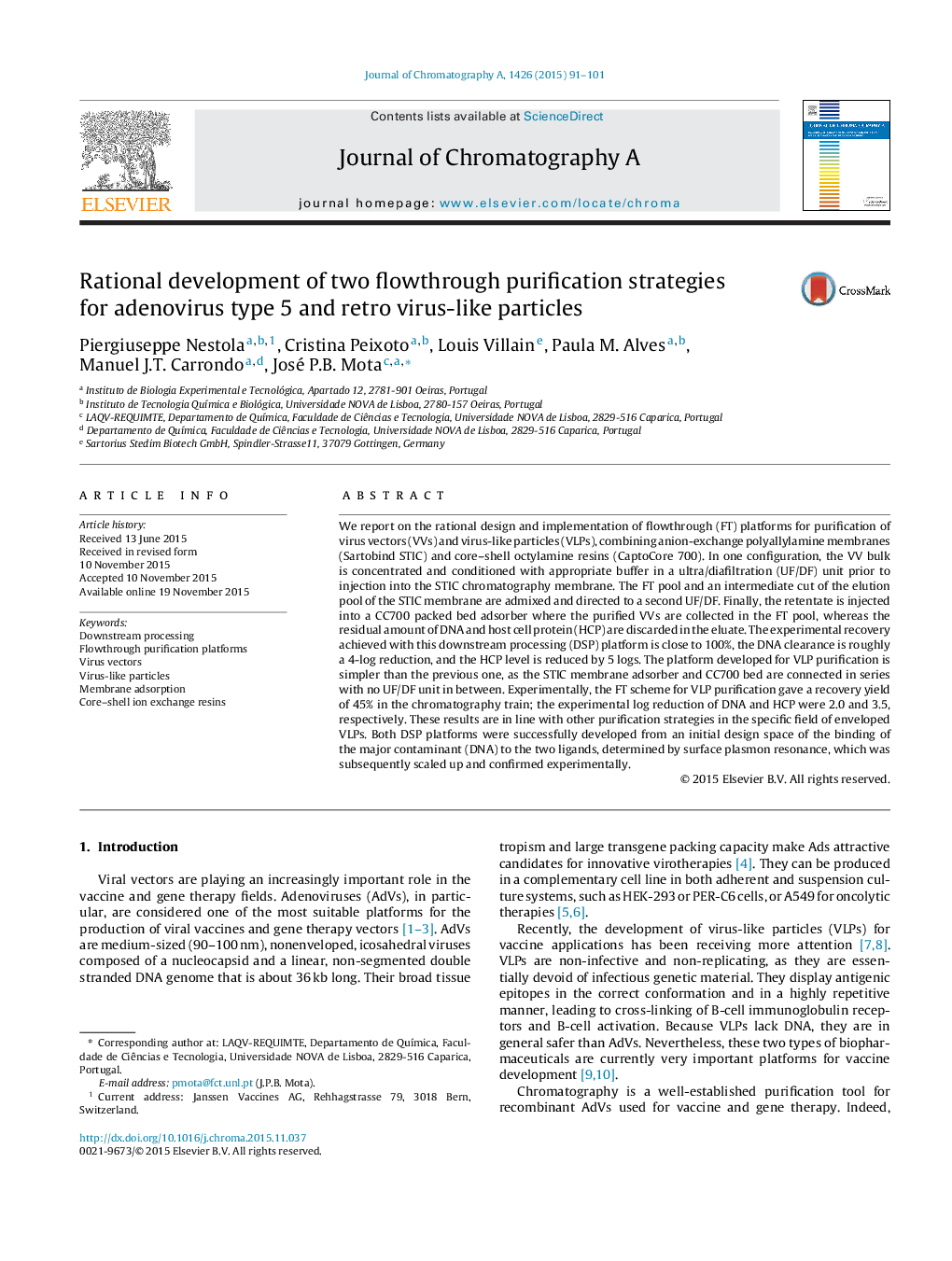| Article ID | Journal | Published Year | Pages | File Type |
|---|---|---|---|---|
| 7610634 | Journal of Chromatography A | 2015 | 11 Pages |
Abstract
We report on the rational design and implementation of flowthrough (FT) platforms for purification of virus vectors (VVs) and virus-like particles (VLPs), combining anion-exchange polyallylamine membranes (Sartobind STIC) and core-shell octylamine resins (CaptoCore 700). In one configuration, the VV bulk is concentrated and conditioned with appropriate buffer in a ultra/diafiltration (UF/DF) unit prior to injection into the STIC chromatography membrane. The FT pool and an intermediate cut of the elution pool of the STIC membrane are admixed and directed to a second UF/DF. Finally, the retentate is injected into a CC700 packed bed adsorber where the purified VVs are collected in the FT pool, whereas the residual amount of DNA and host cell protein (HCP) are discarded in the eluate. The experimental recovery achieved with this downstream processing (DSP) platform is close to 100%, the DNA clearance is roughly a 4-log reduction, and the HCP level is reduced by 5 logs. The platform developed for VLP purification is simpler than the previous one, as the STIC membrane adsorber and CC700 bed are connected in series with no UF/DF unit in between. Experimentally, the FT scheme for VLP purification gave a recovery yield of 45% in the chromatography train; the experimental log reduction of DNA and HCP were 2.0 and 3.5, respectively. These results are in line with other purification strategies in the specific field of enveloped VLPs. Both DSP platforms were successfully developed from an initial design space of the binding of the major contaminant (DNA) to the two ligands, determined by surface plasmon resonance, which was subsequently scaled up and confirmed experimentally.
Related Topics
Physical Sciences and Engineering
Chemistry
Analytical Chemistry
Authors
Piergiuseppe Nestola, Cristina Peixoto, Louis Villain, Paula M. Alves, Manuel J.T. Carrondo, José P.B. Mota,
